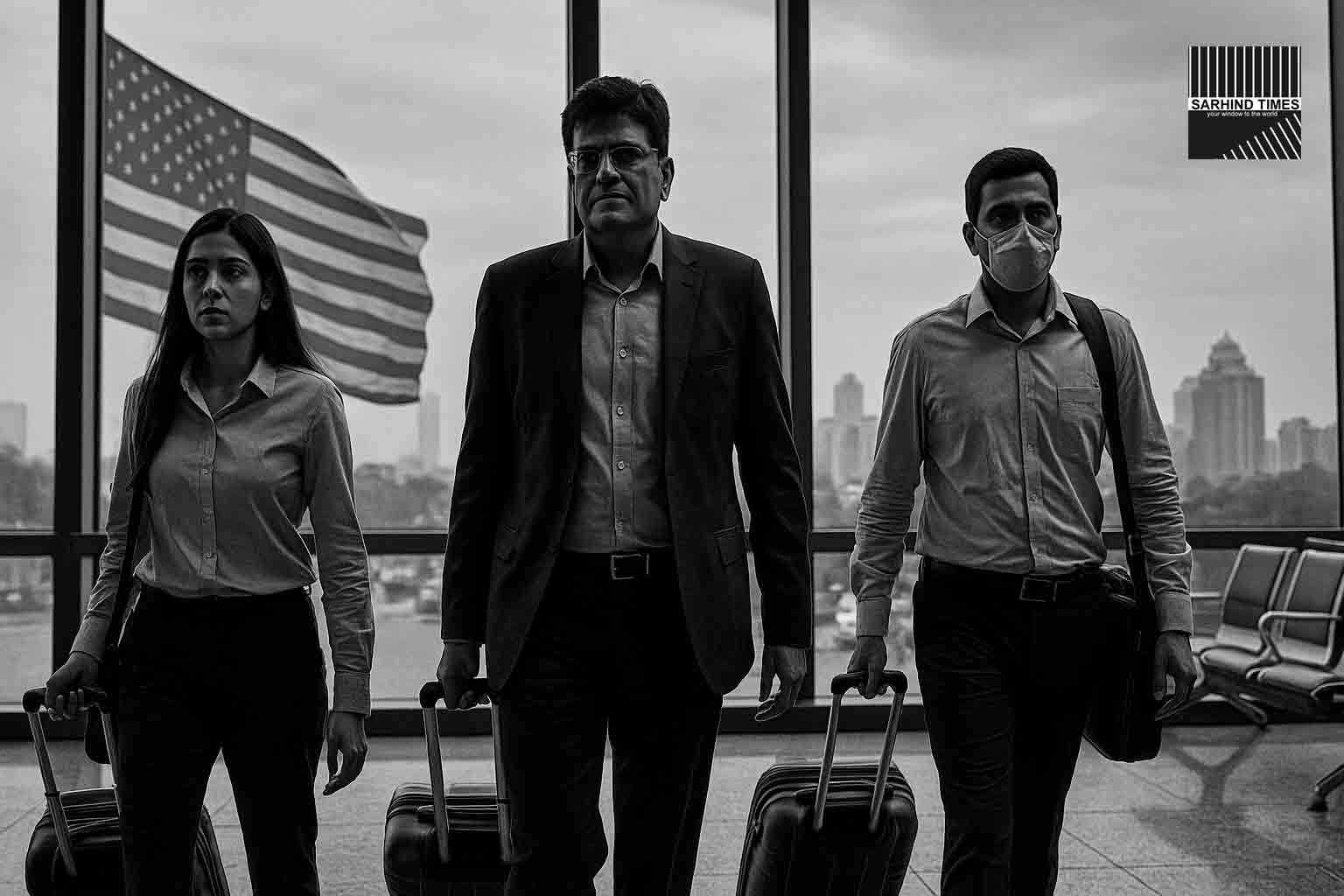A proposed $100,000 H-1B entry fee by the White House has sent shockwaves across India’s technology ecosystem. Long reliant on skilled migration to the US, Indian tech majors, startups, and aspiring professionals are grappling with what could be the biggest disruption to global talent mobility in decades.
While the policy is still under review, its symbolism and potential impact are already being felt. For companies with large on-site teams in the US, it spells higher costs and legal headaches. For Indian engineers and early-career graduates, it could shift career decisions away from America—and back towards India’s growing startup and AI ecosystem.
The Shock: A $100,000 Barrier
The proposed H-1B fee hike is unprecedented:
- Current filing costs already run into several thousand dollars.
- A $100,000 entry fee would make hiring H-1B talent prohibitively expensive for most firms.
- Indian IT giants (TCS, Infosys, Wipro) and global majors (Google, Microsoft, Amazon) with large Indian workforces are reviewing legal and operational strategies.
Immediate concerns include:
- Visa renewal risks.
- Employee travel uncertainties.
- Employer cost absorption vs. employee burden.
India’s Tech Reaction
The news has triggered both anxiety and opportunity:
- IT majors are conducting contingency planning to rebalance teams.
- Startups see a chance to attract returning engineers.
- Founders are framing the moment as a “talent wapsi” (homecoming).
One Bengaluru founder quipped: “If the US doesn’t want them, we’ll take them. India’s AI and SaaS ecosystem is hungry for global product DNA.”
The Talent Wapsi Narrative
India has seen reverse brain drain before, but this could accelerate it:
- Returning engineers bring product development skills honed in Silicon Valley.
- Go-to-market expertise helps startups scale faster.
- Network effects link Indian startups to global investors and customers.
If the policy sticks, India could see a surge of AI, deep tech, and SaaS startups founded by returnees.
Challenges to a Smooth Transition
However, a talent wapsi is not guaranteed. Key challenges include:
- Funding availability: India’s venture market is tightening after 2021 highs.
- Domestic demand depth: Can Indian customers pay for advanced AI products?
- Policy ecosystem: Ease of doing business, tax clarity, and infrastructure remain sticking points.
Without these, returning talent may struggle to replicate US opportunities.
Impact on US–India Relations
The fee proposal coincides with renewed India–US trade talks (see related story). Tech mobility is central to that dialogue. India is expected to push back diplomatically, framing the fee hike as discriminatory against its skilled workforce.
For Washington, the fee aligns with domestic political pressures but risks alienating a key partner at a time when China diversification strategies depend on India’s role in global supply chains.
Industry Voices
- Tech worker (San Jose): “We feel blindsided. Overnight, career paths look uncertain.”
- Startup founder (Bengaluru): “This is our chance to tap Silicon Valley DNA right here in India.”
- Policy analyst: “If implemented, this could be a catalyst for India’s talent base, but only if the ecosystem is ready to absorb it.”
Historical Parallels
India has faced H-1B shocks before—caps, lotteries, and policy tightening. Each wave triggered discussions on reverse migration.
What makes this different: the scale of the fee. Unlike past tweaks, this essentially prices out smaller companies and restricts H-1Bs to only the deepest-pocketed firms.
The Startup Angle: AI & Deep Tech
AI startups in India stand to benefit most:
- Returning engineers bring cutting-edge skills in large language models, chip design, and robotics.
- India’s cost advantage could make it a global hub for AI development.
- With talent back home, venture capitalists may redirect dollars to Indian soil.
But again—the capital ecosystem must be ready to catch this wave.
The Worker’s Dilemma
For Indian engineers in the US, the options now look different:
- Stay and fight costly visa battles.
- Shift to Canada, UK, or Australia, where policies are friendlier.
- Return to India and build afresh.
The policy shock is already prompting many to reassess long-term goals.
Conclusion
The proposed H-1B fee hike is both a threat and an opportunity. For Indian tech, it may cause immediate pain—costly disruptions for IT majors and career uncertainty for workers. Yet it could also trigger a transformative talent return, energizing India’s startup ecosystem.
The final impact will depend not just on Washington’s decision, but on whether India can seize the moment—with capital, policy support, and a vision to turn talent wapsi into innovation leadership.
#H1B #TechTalent #StartupIndia #AI #Immigration #USIndia #BrainDrain #TalentWapsi

























+ There are no comments
Add yours